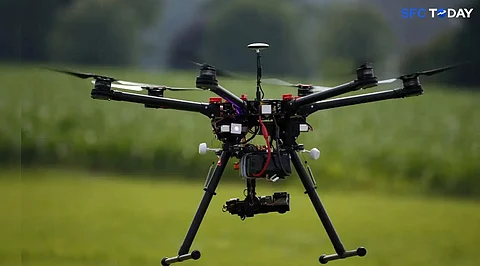

India's drone industry is growing rapidly, becoming one of the most exciting sectors in the stock market. Driven by government support, technological advancements, and rising demand across industries, the drone sector is attracting serious attention from investors. This article provides a detailed look at current trends, key companies, recent developments, and what this means for the Indian stock market.
The Indian drone market is expected to grow at a strong pace over the next few years. Experts predict that by 2030, the market will be worth close to ₹40,000 crore, growing at an annual rate of over 20%. This growth is being driven by the increasing use of drones in many areas such as agriculture, defense, surveillance, delivery services, and infrastructure development.
In the defense sector alone, drones are playing a bigger role in border patrol, intelligence gathering, and combat operations. This part of the drone market is likely to reach over ₹34,000 crore by 2030. With both public and private sector demand rising, drone-related companies are becoming key players in India's technological future.
The Indian government is playing a vital role in encouraging the growth of the drone industry. Some important initiatives include:
Production-Linked Incentive (PLI) Scheme: The government has allocated ₹57 crore under the PLI scheme for drone manufacturers. This money is being used to promote domestic production, reduce dependence on imports, and support new startups in the field.
Skill Development Programs: Several states have launched training programs to develop skilled drone operators and engineers. For example, Kerala has started an advanced drone pilot training initiative to create jobs and improve technical know-how among the youth.
Liberalized Drone Rules: The government has also relaxed many drone operation laws to make it easier for companies to develop and use drones for commercial purposes.
These steps are creating a healthy environment for drone-related companies to grow and innovate.
Several Indian companies are leading the charge in the drone industry. Their involvement ranges from manufacturing drones to providing related technologies and services.
ideaForge Technology: Known for its high-quality drones used by the defense and security forces. The company has gained a solid reputation and is seen as a pioneer in India's drone space.
Zen Technologies: Specializes in defense training solutions and has expanded into drone technology. Its drones are used for military training and battlefield simulations.
Paras Defence and Space Technologies: Offers a variety of defense products, including drone systems. Recently, it partnered with an Israeli company to develop drones for transporting goods and equipment in defense operations.
Hindustan Aeronautics Limited (HAL): A major state-owned company involved in aerospace and defense. It has started developing drones for military and surveillance purposes.
Bharat Electronics Limited (BEL): Another public sector giant, BEL is involved in building drone-related systems, including radar and electronic warfare systems.
These companies are not only advancing drone technology but also becoming attractive options for stock market investors.
In recent months, several events have further boosted investor interest in drone stocks:
A military operation called "Operation Sindoor" highlighted the growing importance of drones in defense. After this event, the stock prices of companies like ideaForge, Zen Technologies, and Paras Defence saw sharp increases—some rising as much as 50% in just a few days.
Solar Industries, which makes explosive devices and recently launched its own line of defense drones called "Nagastra," saw its share price hit a 52-week high. The market reacted positively to the successful testing and deployment of these drones.
Overall, defense stocks have been on an upward trend, with several drone-related companies seeing double-digit gains due to increasing geopolitical tensions and greater focus on military preparedness.
These developments show that drones are no longer just futuristic tools—they are becoming essential in national security and industrial applications.
For investors, drone stocks present a unique opportunity. However, it is important to consider both the potential and the risks before making decisions.
High Growth Sector: The drone industry is still in its early stages but growing very quickly. As more industries begin to use drones, companies that are early movers could benefit the most.
Strong Government Support: Policies like the PLI scheme and skill development programs provide a strong foundation for growth. Investors often look for industries that are backed by clear government support.
Technology Driven: Success in this sector depends heavily on innovation. Companies that invest in research and development and offer reliable, cutting-edge products are more likely to succeed.
Volatility: While the sector is promising, it can also be affected by global events such as wars or political tensions. This can cause share prices to fluctuate more than in other sectors.
Company Fundamentals: Before investing, it's important to look at each company's financial health, growth plans, and competitive advantages. Not all companies in the drone sector will be equally successful.
The drone industry in India is expected to grow steadily in the coming years. Demand from agriculture, defense, and logistics will likely keep rising. The delivery of medical supplies, fertilizers, and even e-commerce products by drone is becoming more common. This expansion will open up new revenue streams for companies and provide fresh opportunities for investors.
In the defense sector, increased budget allocations and the need for advanced surveillance tools will ensure a steady demand for drones. Similarly, in the agriculture sector, drones are being used for spraying fertilizers and monitoring crops, which helps improve efficiency and reduce costs for farmers.
Infrastructure companies are also using drones for land surveys, inspections, and project monitoring, saving both time and resources. These diverse applications show that the drone industry is not limited to one segment but is spreading across the economy.